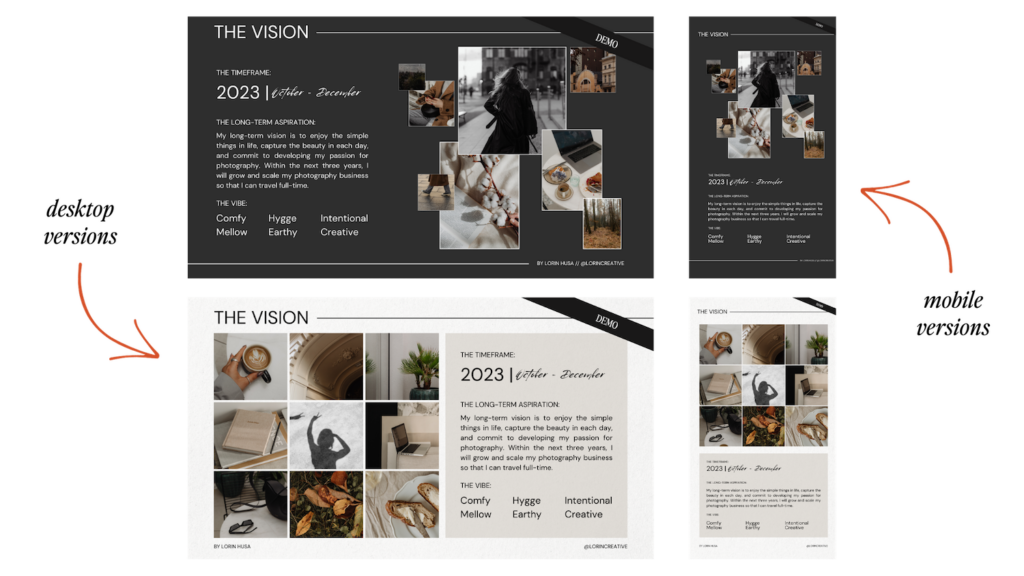The 12 week Year: What It Is and Why I’m So Obsessed
Confession— I’m a self-help junkie, and I’m not apologizing for it. I’m that annoying friend who read Atomic Habits, had a mind-blowing revelation, and can’t stop gabbing about it to anyone who’ll listen.
So much so, that if you’ve ever caught yourself in the middle of a conversation thinking, “Did she just quote James Clear again?”—you’d be met with a resounding, Why yes, yes I did.
You see when something finally clicks in my brain and I experience that game-changing “Aha moment,” I latch onto it so tightly that it quickly becomes my entire personality.
Don’t even get me started on my Marie Kondo era. Ah, 2014—yours truly decided to crown herself the organization queen, expertly folding each piece of clothing into irresistibly neat little rectangles that still spark joy to this day! It was indeed life-changing.
Speaking of life-changing, cue my latest obsession–The 12 Week Year: Get more done in 12 weeks than others do in 12 months. If James Clear and Marie Kondo had a metaphorical love child, this would be it. Okay okay, that might be a smidge dramatic, but that’s how I feel about it! Think organization, think goal setting, think a system that actually works–it’s truly a self-help lover’s dream. Intrigued? Keep reading…
What is the 12 Week Year?
The 12 week year is a time-management system that completely changes the way you look at planning and achieving your long-term goals. Written by Brian P. Moran and Michael Lennington, the goal of The 12 Week Year is to turn your big-picture vision into reality by breaking up your goals into smaller, bite-sized actionable steps in a much shorter timeframe–just 12 weeks! The idea in doing this is to boost focus, urgency, and overall effectiveness.
So, what’s the deal with this approach? It’s all about setting super specific, measurable, and doable goals. This way, you stay accountable, adapt as needed, and can see consistent daily progress—hello motivation!
The best part is that the system isn’t just for business owners, millionaires, or fancy corporate organizations. It’s a system for A-N-Y-O-N-E wanting to crush their goals, big or small, in just 12 weeks!
The cool part? Each 12 week year cycle mimics an entire 12 month year so you can really see how much you can get accomplished. The idea isn’t to create a false sense of urgency but to make sure that those lofty goals you set actually happen. We’ve all been there with the whole ‘new year, new me’ motto, right? Only to be met with frustration, disappointment, and shame by March. I know I’m not the only one.
Okay, great Lorin–who doesn’t love a bold promise of getting more done in less time? But how do you actually pull it off? Well, friend, let me break it down for you with some steps recommended in the book…
Step One: Vision Planning
The first step in the system is to define your aspirational long-term vision and goals for your life. The idea here is to get you thinking about your deep desires, your dream life, what you want that to look like, and most importantly WHY.
They suggest that your vision must be emotionally compelling because there will be moments throughout your 12 week year when you won’t feel like taking action and that’s when knowing your why will become the most important.
Once you define your why, you’ll want to break that vision up into what that looks like for the next 1-5 years into the future, then break that down one step further into what you want to get accomplished in the next 12 weeks. Your big-picture vision should be top of mind for each of these goals.
I know, I know, sounds intimidating right? Most days, I don’t even want to think about what to cook for dinner, let alone plan for 5 years into the future, but I promise this is a crucial part of the process and it gets to be FUN!
If you don’t know where to start, here are some questions to consider when planning your long-term vision:
- What matters to me personally, professionally, physically, emotionally, and financially?
- How much time freedom do I want?
- How much money do I need to be financially secure?
- What are my primary personal and professional goals in life?
- Where do I want to live?
- Where would I want to go on a dream vacation?
- What’s my ideal work-life balance situation and what steps can I take to achieve it?
Looking for a way to keep your big-picture vision top of mind? Then you’ll love my FREE Canva mood board templates that also come with a FREE 12 week year template in notion!

The Canva templates come with different designs for desktop and mobile! Perfect for using as a screen saver so you’re reminded of your goals every time you log on to your computer or pick up your phone!
Once you finish, keep your vision where you’ll actually see it daily (i.e. print it out and put it on a bulletin board, or add it to your desktop screensaver or the lock screen on your phone).
Step Two: Goal Setting
Now, let’s dive into the exciting world of goal-setting!
The key here is to create specific, measurable, and time-bound goals that align with your long-term vision. Make sure these goals are in that sweet spot—realistic enough to achieve within the 12 week timeframe, yet challenging enough to actually make some real progress.
Before you keep reading, I want to remind you that there’s no prize for doing more, so no need to overwhelm yourself with a laundry list of goals—it’s just going to set you up for failure. Now is the time to get brutally honest with yourself. Focus on quality over quantity and narrow it down to your top three goals.
For example, if you really want to become a runner, but you’ve never run a day in your life, maybe signing up for a marathon might be a tad too ambitious for your first 12 week year. Remember, the goal is to build momentum and feel accomplished, not to set yourself up for failure.
So, if becoming a runner is one of your big vision goals for your life, let’s break down the steps to ensure success in your first 12 week year.
Let’s say it’s January, and your goal is to complete a 5k by the end of the 12 weeks. Here’s a quick breakdown:
Big-picture vision: Become a runner
12 Week Year Goal: Run a 5k
Now, you’ll want to read the next section so you can get all the nitty-gritty details on how you’ll turn these goals into actionable steps.
Step Three: Tasks & Weekly Planning
Next, you’ll need to break down your 12 week year goals into smaller tasks.
Remember, these tasks should be specific, measurable, and time-bound goals that move you closer toward your long-term vision. You’ll also want to write down the frequency that you’ll be doing each task throughout your 12 week year.
Using the running example above, here is what that could potentially look like…
Action Steps :
- Find a local race and register (this will help keep you accountable)
- Plan your route and schedule for your runs–get very specific on the when and where.
- Make sure you have the proper gear.
- Download the ‘From Couch to 5k’ app
- Follow the training plan–this could look like jogging for 5 minutes 3 times a week until you work up to more.
In order to stay organized and focused, the book suggests utilizing time blocking on your calendar.
For example, the Sunday before each new week, take 15 minutes to review the previous week and plan tasks and activities for the upcoming week to help keep you focused.
Try scheduling one 3-hour strategic block during your week that is strictly dedicated to completing ‘deep work’. Schedule 1-2 buffer blocks each day (one in the morning and one near the end of the day).
Step Four: Create Accountability
Accountability is a key factor in being able to achieve your goals. Without a strong commitment and the constant reminder of your why, staying accountable can be challenging. Implementing a structured system as well as connecting with others, individually or in a group, significantly improves your chances of staying on track and reaching your goals!
In the book, the authors suggest implementing a WAM which stands for Weekly Accountability Meeting. This can be with one person, or a group! The point is, you want to have some sort of accountability that will help you stay on track.
For instance, let’s go back to our running example. Doing everything on your own can be lonely and boring, but joining a local running club that meets weekly or participating in an online Facebook group can give you the extra support you need to stay motivated and accountable throughout your 12 week year journey.
Step Five: Weekly Reflections
At the end of each week, it’s important to reflect on what went well and what could use some work. In the book, they suggest giving yourself a score for how you did in each category every week and taking some time to write down some of your key takeaways.
Doing this mini-review of your week not only helps you see what’s going well but also gives you some insight into what you might want to tweak for the next week. Keep in mind, it’s not uncommon that during this process you might find yourself adapting your tasks to better align with your long-term vision.
Once you’ve completed all the steps, you’ll want to rinse and repeat as you continue to use the 12 week year system to create other goals throughout the rest of the year.
Is the 12 week year system right for you?
Now that you’ve gained some insight into how this system can propel you toward your goals, let’s take a moment for a friendly gut check. I’ll be straight with you—it might seem a tad overwhelming at first, and this system operates at a very quick pace. If you’re not one to embrace structure or thrive under time constraints, it might not align with you.
On the flip side, if it truly resonates with you, why not give it a shot and see what happens?! You won’t know until you give it a genuine effort. Who knows, you could end up being as obsessed with it as I am! I’m currently in my first 12 week year and will be sharing all about my experience in the coming weeks, so stay tuned for that!
If you’re excited about the concept but find yourself unsure about where to kick things off to organize your thoughts, I’ve got you covered with a FREE Notion template inspired by the 12 week year!

Packed with checklists and prompts, it’s designed to help you get organized and take actual steps toward your big-picture vision. As a bonus, it comes with two FREE Canva vision board templates designed to get you inspired and help keep that long-term vision top of mind.
Still craving more? You can find additional FREE resources on the official 12 Week Year Website.
Instagram Links Page Template
download now >>
Because Your linktree bio isn't doing you any favors.
Designed for showit
free!
Instagram Links Page Template